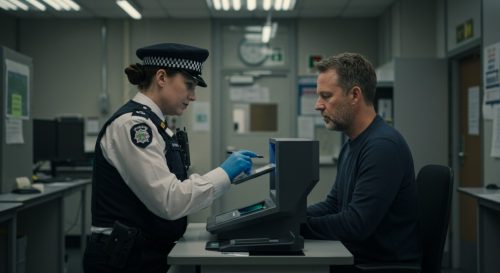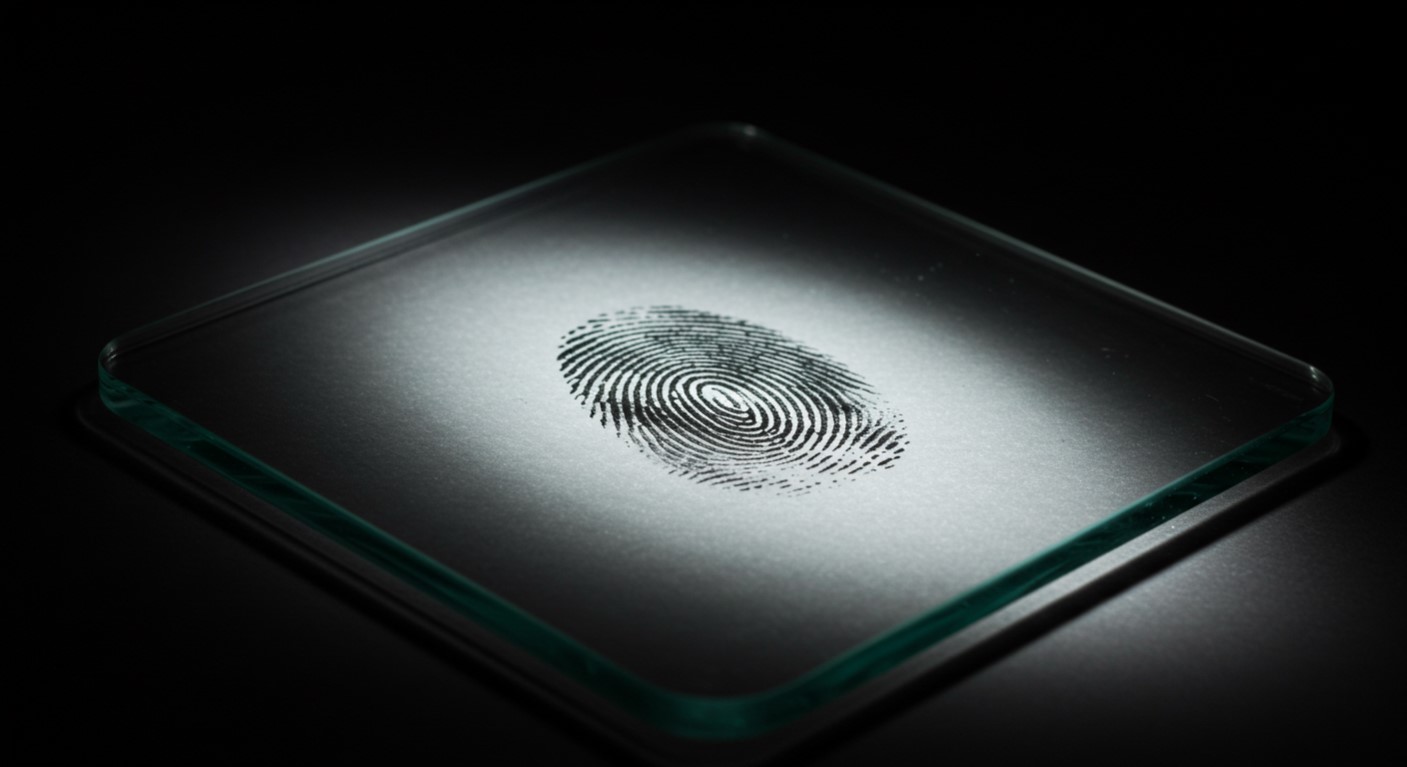What Are the Implications of Providing DNA and Fingerprints at The Station?

What Are the Implications of Providing DNA and Fingerprints at The Station?
Providing DNA and fingerprints at the station holds significant implications in criminal investigations, identification processes, and overall security.
DNA, the genetic material present in every cell of our body, serves as a unique identifier, while fingerprints are individual patterns formed by ridges and furrows on our fingertips. These biometric data are collected at police stations for various purposes.
The collection of DNA and fingerprints at the station enables law enforcement agencies to conduct criminal investigations effectively. DNA evidence can be compared against the DNA profiles in databases, aiding in identifying suspects or connecting them to crime scenes.
Similarly, fingerprints found at a crime scene can be matched with those in criminal databases, helping to establish links and solve cases.
The data collected at the station contributes to criminal record and background checks. DNA profiles and fingerprint records are stored in national databases, allowing law enforcement agencies to conduct comprehensive background checks on individuals.
This assists in identifying repeat offenders or individuals with criminal records, enabling informed decision-making in legal proceedings and employment vetting.
Another implication of providing DNA and fingerprints at the station is their use in the identification of unknown or missing persons. Comparing collected DNA samples or fingerprints with existing databases can help determine the identity of unidentified deceased individuals or locate missing persons.
This contributes to resolving cases, providing closure to families, and facilitating proper legal procedures.
When it comes to providing fingerprints at the station, accuracy in criminal identification is a crucial implication. Fingerprints are unique to individuals and remain consistent throughout their lifetime. Collecting fingerprints ensures accurate identification, helping in apprehending criminals and preventing misidentification in criminal proceedings.
Fingerprints collected at the station provide support in criminal investigations. They can be compared to fingerprints found at crime scenes, aiding in linking suspects to specific incidents. This evidence serves as a valuable tool for investigators, providing valuable leads and assisting in building strong cases against offenders.
Furthermore, the collected fingerprints have implications beyond criminal investigations. They are used in various government and security systems, including immigration, border control, and access control. Fingerprints, as biometric identifiers, offer a reliable means of verifying individuals’ identities in these security-sensitive contexts.
While DNA and fingerprint collection at the station serves valuable purposes, legal considerations and privacy concerns must be addressed. Consent and legal authority are essential factors when collecting and storing such biometric data. Data protection and privacy laws should be followed to ensure the secure handling and storage of collected DNA samples and fingerprint records, respecting individuals’ privacy rights.
What Are DNA and Fingerprints?

DNA stands for deoxyribonucleic acid, while fingerprints are unique patterns of ridges and valleys on the fingertips. DNA, also known as genetic material, consists of vital information that determines individual traits and characteristics.
On the other hand, fingerprints are formed by the friction ridges present on the surface of the skin. Both DNA and fingerprints play crucial roles in identification purposes, especially in forensic investigations.
Forensic experts extract DNA from body cells or bodily fluids, while fingerprints are typically collected using specialised fingerprinting techniques. The integration of DNA analysis and fingerprint identification provides substantial evidence in criminal investigations and significantly contributes to establishing a person’s identity.
These two distinctive forms of identification, DNA and fingerprints, are pivotal in uncovering the truth in legal proceedings.
What is DNA?
DNA, also known as deoxyribonucleic acid, is the genetic material that carries the instructions for the development, functioning, and reproduction of all living organisms. It is a long, double-stranded molecule made up of nucleotides that form a unique sequence.
DNA can be found inside the nucleus of human cells and plays a crucial role in determining our traits and characteristics. In the context of forensic investigations, DNA can be extracted from various biological materials, including blood, saliva, or hair, which are often discovered at crime scenes.
The analysis of DNA samples is instrumental in identifying individuals, establishing connections between crime scenes and suspects, and proving the innocence of wrongly accused individuals. So, in short, DNA is the key to understanding the fundamental building blocks of life.
What are Fingerprints?
Fingerprints are unique patterns formed by ridges and furrows on the fingertips. They are formed by sweat glands on the fingers and can be used as a means of identification. Fingerprints have been used for forensic purposes for over a century due to their distinctiveness and permanence.
Each individual has a unique set of ridges and patterns, making fingerprints a reliable method of identification in criminal investigations. Fingerprints can be collected at police stations and used to match suspects to crime scenes or eliminate innocent individuals from suspicion.
They are an essential tool in the criminal justice system for solving crimes and ensuring accurate identification.
Why Are DNA and Fingerprints Collected at the Station?
Why Are DNA and Fingerprints Collected at the Station?
When individuals are brought to the police station, DNA and fingerprints are collected for several important purposes. The collection of these samples helps establish a person’s identity by comparing their fingerprints against a database of known offenders.
This process aids in solving crimes and preventing mistaken identity. Additionally, DNA samples can be compared to evidence found at crime scenes, providing crucial leads in investigations.
The collection of DNA and fingerprints at the station plays a vital role in upholding the principle of “innocent until proven guilty” by providing evidence that can either support or refute someone’s involvement in a crime.
Implications of Providing DNA at the Station

Criminal Investigations
The collection of DNA and fingerprints at the station has significant implications for criminal investigations. Establishing identity: DNA and fingerprints are crucial for identifying suspects and connecting them to a crime scene.
- Solving cold cases: DNA evidence collected during investigations can be used years later to re-evaluate cases and potentially solve previously unsolved crimes.
- Exonerating the innocent: DNA analysis can also aid in overturning wrongful convictions by proving the innocence of individuals who were wrongly accused.
- Linking crimes: DNA databases can help identify patterns and link crimes that may have been committed by the same individual.
- Supporting investigations: DNA and fingerprint evidence can provide valuable leads and additional evidence for investigators to build strong cases.
DNA and fingerprints play a crucial role in criminal investigations, helping to identify suspects, solve cases, and ensure justice is served.
Criminal Record and Background Checks
Criminal record and background checks are essential in various scenarios to ensure safety and make informed decisions. When providing DNA and fingerprints at the station for these checks, the following steps should be considered:
- Consent: Ensure proper consent is obtained from the individual before collecting and using their DNA and fingerprints for criminal record and background checks.
- Data Protection: Safeguard the collected information, following privacy laws and regulations to protect the individual’s personal information during criminal record and background checks.
- Verification: Verify the accuracy and authenticity of the collected DNA and fingerprints to avoid any errors or false identifications during criminal record and background checks.
- Criminal Investigations: Utilise the collected DNA and fingerprints to aid in solving crimes, identifying suspects, and providing evidence in criminal investigations during criminal record and background checks.
- Background Checks: Conduct thorough background checks using the collected DNA and fingerprints to assess an individual’s criminal history and potential risks during criminal record and background checks.
Ensuring the proper handling and utilization of DNA and fingerprints in criminal record and background checks is essential for maintaining a fair and effective criminal justice system.
Identification of Unknown or Missing Persons
The identification of unknown or missing persons is an essential aspect of collecting DNA and fingerprints at the station. It significantly aids law enforcement agencies in locating and reuniting individuals with their families.
The analysis of DNA can be utilized to compare unidentified remains with DNA samples obtained from family members, resulting in a definitive identification. Additionally, fingerprints prove invaluable in the identification of missing persons through comparison with existing databases.
These methods of identification play a crucial role in the resolution of cases involving missing individuals, granting closure to families, and assisting in criminal investigations.
Implications of Providing Fingerprints at the Station

Accuracy in Criminal Identification
Ensuring accuracy in criminal identification is of paramount importance. One method that significantly contributes to achieving this accuracy is the collection of DNA and fingerprints at the station.
DNA analysis is an incredibly precise forensic technique that plays a crucial role in either exonerating suspects or definitively pinpointing criminals. Conversely, fingerprints have long been recognised as unique to each individual, making them an invaluable tool for accurately linking individuals to criminal activities.
By gathering DNA and fingerprints at the station, law enforcement agencies can significantly enhance the precision of their investigations, thereby bolstering the overall effectiveness of the criminal justice system.
The maintenance of accuracy in criminal identification not only safeguards the innocent but also ensures the accountability of the guilty.
Support in Criminal Investigations
Providing DNA and fingerprints at the station can offer valuable support in criminal investigations. Here are the steps involved:
- Collection: DNA samples and fingerprints are collected from individuals during the booking process at the police station.
- Identification: These samples are utilised to accurately identify individuals involved in criminal activities.
- Evidence: DNA and fingerprint analysis provide crucial evidence that can link suspects to crime scenes, thereby supporting the investigation.
- Suspect profiling: DNA and fingerprint databases help create offender profiles and aid in identifying potential suspects, further enhancing the support in criminal investigations.
- Investigation progress: By comparing DNA and fingerprint found at crime scenes to the collected samples, investigators can achieve significant breakthroughs, strengthening the support provided.
- Conviction: DNA and fingerprint evidence can bolster the prosecution’s case and contribute to convictions in court, enhancing support in criminal investigations.
- Exoneration: In some cases, DNA evidence can also be utilized to exonerate individuals who have been wrongfully accused or convicted of crimes, adding to the support in criminal investigations.
Identification in Government and Security Systems
Providing DNA and fingerprints at the station has significant implications for identification in government and security systems.
- Enhanced Security: Biometric identification in government and security systems, such as DNA and fingerprint databases, allows law enforcement agencies to accurately identify individuals involved in criminal activities, aiding in preventing future crimes.
- Government Operations: In government and security systems, various agencies, such as immigration and border control, utilise biometric data to verify identities, ensuring national security and efficient processing of individuals.
- Access Control: Biometric identification systems, a crucial part of government and security systems, are extensively used in high-security areas such as airports, government buildings, and military installations to control access and prevent unauthorised entry.
Legal Considerations and Privacy Concerns

Consent and Legal Authority
When it comes to providing DNA and fingerprints at the station, obtaining consent and having the necessary legal authority are two important considerations.
- Consent: Before law enforcement authorities can collect the DNA and fingerprints of individuals, they must first obtain their consent.
- Legal Authority: The collection of DNA and fingerprints must be done in accordance with specific laws and regulations, such as the Criminal Justice and Police Act 2001, which authorises such procedures.
- Protection of Rights: It is crucial to ensure that the collection of DNA and fingerprints is conducted in a manner that respects and does not violate an individual’s rights.
Data Protection and Privacy Laws
Data protection and privacy laws are of utmost importance when it comes to the collection and storage of DNA and fingerprints at a police station. These laws ensure that individuals’ personal information is safeguarded and handled responsibly.
They provide guidelines for obtaining consent, legal authority, and the appropriate use of this sensitive data for forensic purposes. Complying with data protection and privacy laws is essential in order to safeguard individuals’ privacy rights and prevent any misuse or unauthorised access to their genetic information.
These laws strike a balance between the need for effective criminal investigations and the preservation of individual privacy.
Frequently Asked Questions
What is the significance of providing DNA and fingerprints at the station?
Providing DNA and fingerprints at the station is essential for law enforcement agencies to identify individuals involved in criminal activities. DNA and fingerprints are unique to each person, making them crucial forensic tools in solving crimes and ensuring accuracy and fairness in the criminal justice system.
Are there any human rights issues related to DNA and fingerprint collection?
The collection of DNA and fingerprints raises concerns about privacy and the confidentiality of sensitive medical and genetic information. Unlike fingerprints, DNA samples can reveal intimate details about a person. However, access to and use of DNA samples stored in databases, such as the National DNA Database and local DNA databases, are regulated to protect the rights and privacy of individuals.
What are the examples of successful DNA use in solving crimes?
There have been numerous successful cases where DNA technology has helped identify criminals and clear innocent suspects. For example, an Uber driver who was accused of rape and arrested was subsequently released due to lack of DNA match.
Notice: Informational Content Disclaimer
The content provided on this website, including articles, blog posts, and other informational materials, is intended for general informational purposes only. It is not intended as, and should not be considered, legal advice.
Visitors to this website should be aware that the information presented here is not a substitute for seeking legal advice from a qualified solicitor or legal professional. Each individual's legal situation is unique, and the information provided may not be applicable to specific circumstances.
If you require legal advice or have specific legal questions, we encourage you to contact us directly. Our experienced team of solicitors is here to assist you with your legal needs and provide tailored advice to address your concerns.
Please be advised that any communication through this website, including the use of contact forms or email, does not create a solicitor-client relationship. Confidential or time-sensitive information should not be sent through this website. To establish a solicitor-client relationship and discuss your legal matters in detail, please contact us for a consultation.
We strive to provide accurate and up-to-date information, but we make no representations or warranties regarding the accuracy, completeness, or suitability of the information contained on this website. We shall not be liable for any reliance placed on the information provided herein.
Thank you for visiting our website. We look forward to the opportunity to assist you with your legal needs.




